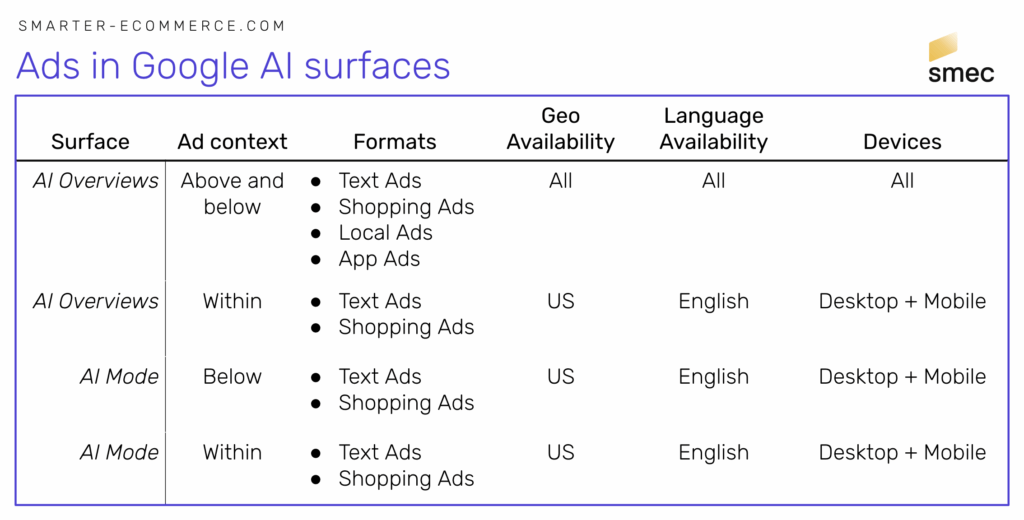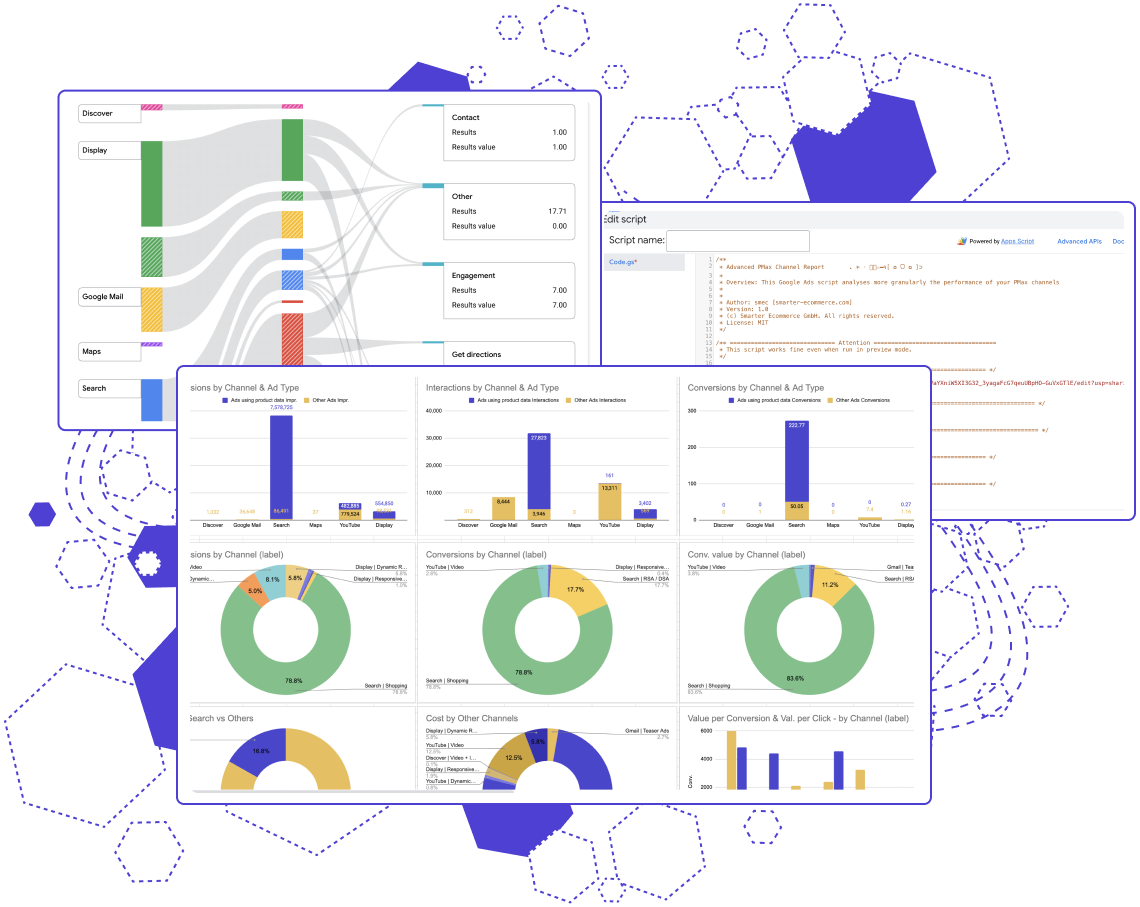Subscribe to join thousands of other ecommerce experts

Back in May 2023, Google teased new AI-powered search features that will eventually open up a new horizon of fresh ad inventory. Fast-forward to today, and it still feels like… not much has happened. But here’s the thing: with rival answer engine Perplexity pausing its ad network plans and OpenAI still sitting on the sidelines, Google is already in a distant first place.
Google doesn’t need to scramble: they’ve got the advertisers and they’ve got the infrastructure. When the time is right, they can more or less flip a switch and ads will be there. They’re already cashing billions with Search ads and disrupting that too early would be a risky move.
In this post, we’ll break down where things actually stand before diving into a comprehensive FAQ based on what’s known and not known about this new category of advertising.
Google’s current progress on launching ads in AI Overviews and AI Mode
At time of writing, ads are fully launched worldwide above and below AI Overviews. They are rolling out in the US for ads within AI Overview and below AI Mode, while ads are only being tested within AI Mode. Google has hinted that more ads could start appearing in more AI contexts in English-speaking markets soon.
It’s not clear when a fully scaled ad launch will be completed. It has gone slow so far, but in principle it could go fast any time now.

FAQ on ads in AI Mode and AI Overviews
Eligibility & Targeting
No. This is a common myth. You can also use standard Shopping (which is also keywordless) and standard Search when broad match is activated. App campaigns are also eligible to serve ads for AI Overviews. Google needs to fill these ad auctions to keep competition density high, so they want more campaign types serving here.
No. These placements cannot specifically be targeted, and AI ads are keywordless.
No. There is no opt in or opt out. If you are running any of the eligible campaign types, you might show ads.
No. Demand Gen campaigns do not include the Search Network, so ads from this campaign type currently cannot appear here. YouTube is known to be testing AI Overviews as well, but there have been no confirmed updates regarding ad placements in this context.
No. This is just Google’s entry point, and we expect increasingly asset-oriented ad experiences to be integrated in time. Google calls these “enhanced units.” While standard Shopping also serves on AI surfaces, this could result in Performance Max becoming the stronger option in the long run.
Reporting & Performance
No. Google is very risk-averse about making quantitative statements since shareholders are watching this closely. They will only say that consumers have found the ads “helpful”.
No. However, Google has hinted that they will offer reporting at some point. It’s worth noting that Ads in AI Overviews are reported as “Top Ads,” so you might look for changes in volume or performance there.
Yes. It is expected that queries and prompts which triggered ads for AI surfaces will be available in the search term report. However, they will currently not be labelled as such. Furthermore, it seems likely that longer, more complex queries (in AI Mode for example) will not have enough volume to clear privacy thresholds and will therefore remain hidden.
This remains to be seen, but Google states that advertisers should focus on feed hygiene including detailed product data such as pricing and promotions, shipping, returns, and descriptions. They emphasize data freshness and continuous verification. Lastly, Google recommends supplying a wide variety of image and video assets. To unpack this a bit: if we suppose that users will write more detailed queries and/or do more product filtering while chatting with AI, then your product feed needs to handle some of the browsing and filtering that your website UI might usually cover.
Relevance & Visibility
Google uses standard systems to detect commercial intent. This includes search queries and chat prompts that are not overtly commercial.
Existing placements expect (and reward) relevance between the query, the ad, and the landing page. In AI surfaces, Google also considers the AI content itself, in other words, the answer generated by the model. The practical implications of this are currently hard to assess but having rich product data and detailed landing pages is likely important.
The ads are still too experimental and “your money your life” topics are a potential liability.
No concrete answer given. Instead, Google advises advertisers to optimize for conversions rather than CTR. This could be interpreted as a tacit admission that CTRs are declining. You can use smec’s free Market Observer to monitor CTRs, CPCs and other trends in Europe.
According to Google, no. In fact, AI Overviews are expected to increase the number of ad opportunities. While this may pose a risk to organic traffic, the impact on paid placements appears minimal for now.
👉 This space is evolving fast—what’s true today might change tomorrow. Want to stay ahead of the curve? Sign up for our newsletter and get the latest updates delivered straight to your inbox.

